#all of his other bands are some form of punk. but this one is thrashy war metal with a hint of black metal
Explore tagged Tumblr posts
Link

When you think of grunge, do you picture a bunch of long-haired White guys in plaid shirts, singing about teenage angst and self-loathing? Time to expand that viewpoint. Standing above them all should be Tina Bell, a tiny Black woman with an outsized stage presence, and her band, Bam Bam. It’s only recently that the 1980s phenom has begun to be recognized as a godmother of grunge.
This modern genre’s sound was, in many ways, molded by a Black woman. The reason she is mostly unknown has everything to do with racism and misogyny. Looking back at the beginnings of grunge, with the preconception that “everybody involved” was White and/or male, means ignoring the Black woman who was standing at the front of the line.
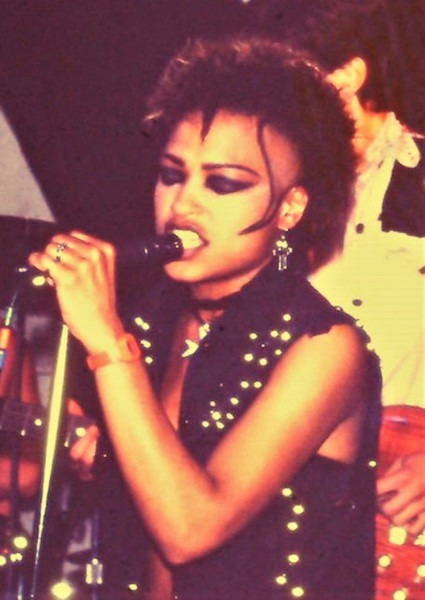
Bam Bam was formed as a punk band in 1983 in Seattle. Bell, a petite brown-skinned spitfire with more hairstyle changes than David Bowie, sang lead vocals and wrote most of the lyrics. Her then-husband Tommy Martin was on guitars (the band’s name is an acronym of their last names: Bell And Martin), Scotty “Buttocks” Ledgerwood played bass, and Matt Cameron was on drums. Cameron would leave the band in its first year and go on to fame as the drummer for Soundgarden and Pearl Jam. But he paid homage to his beginnings by wearing a Tina Bell T-shirt in a photoshoot for Pearl Jam’s 2017 Anthology: the Complete Scores book.
“For some reason a couple of skinheads are up front, calling her [the N-word] And all of the sudden, Bell grabs a microphone stand and she starts swirling it around her head like a lasso… She swung that fuckin’ thing around her head and about the fourth time, she smashed that son of a bitch.”
Bam Bam’s sound straddled the line between punk and something so new that it didn’t have a name yet. Their music combined a driving, thrumming bass line; downtuned, sludgy guitars; thrashy, pulsing drums; melodic vocals that range from sultry to haunting to screamy; and lyrics about the existential tension of trying to exist in a world not designed for you. The band’s 1984 music video for their single “Ground Zero” is low-budget, but Bell’s charisma seeps through.
“She was fucking badass. That’s all there is to it. She was amazing as a performer. I’ve only seen one White male lead singer command the stage in a similar way that Tina Bell did, and that was Bon Scott of AC/DC,” says Om Johari, who attended Bam Bam shows as a Black teenager in the ’80s and who would go on to lead all-female AC/DC cover band Hell’s Belles.
youtube
Christina King, a Seattle scenester who was close friends with Bell from 1984 until the early ’90s, says the singer’s talent was obvious. But she believes a lot of people dismissed Bell as a gimmick.
Among those attending their shows: Future members of grunge bands like Nirvana (Kurt Cobain did a stint as a Bam Bam roadie), Soundgarden, Alice in Chains, and Pearl Jam.
“I remember one person saying to me that they didn’t get ‘the whole Black girl singer thing,’ it just didn’t fit whatever they were into,” says King. “They were too ahead of their time.”
Bam Bam came into being in an era when hundreds of underground clubs, taverns, bars, and social halls — anywhere that you could cram in a band — were within the Seattle city limits. Bam Bam played almost all of them, and often to big crowds: The Colourbox, Crocodile Lounge, Gorilla Gardens, Squid Row — just to name a few.
Among those attending their shows: Future members of history-making grunge bands like Nirvana (Kurt Cobain did a stint as a Bam Bam roadie), Soundgarden, Alice in Chains, and Pearl Jam. Not to mention all the other people, mostly White and male, who would become prime targets for music labels trying to market this new sound.
Bell “already possessed everything they were trying to attain. She had a truer rock and roll spirit than almost any of those guys in that town. Everything they tried to do, she naturally was,” says Ledgerwood, still a loyal bandmate.
One Seattle club, The Metropolis, became “like our fucking living room,” says Ledgerwood. It was also the site of an overtly racist verbal assault against Tina Bell.
“For some reason a couple of skinheads are up front, calling her [the N-word],” Ledgerwood recalls. “And all of the sudden, Bell grabs a microphone stand and she starts swirling it around her head like a lasso… She swung that fuckin’ thing around her head and about the fourth time, she smashed that son of a bitch… She nailed that fucker right in the temple of his head. Split like a melon. And the other guy next to him caught it too, they go down, and we’re like, ‘What the fuck?’”
Ledgerwood says that after going backstage for a while to regroup, Bell came back “and put out the most blistering set of our fucking career.”
This could easily be an anecdote about Bell’s power, her resilience, and willingness to fight back against oppressive forces. But it’s also a story about the cost of being a Black woman who does something that some people don’t expect or approve of.
“She’s being pulled out of her zone because somebody is acknowledging how the rest of the world can see her,” says Johari, empathizing with the star rocker. “And even to react to it by picking up a microphone and smashing someone in the face, that means that that incident cost her not only that moment it takes to get back into the song, but the whole [effects of her] action will last for weeks.
“She’ll replay that over and over and over and over again. And then the people she sees that were there when it happened, they’re gonna come up to her and they’re gonna forget everything that she’s saying, all the stuff that she had did, and they’re only going to focus on, ‘I was at that show where you knocked a dude in the head for calling you an N-word,’” Johari says. “It has nothing to do with her artistry. But it reminds her of the way in which she has to be prepared, just in case it happens again.”
King remembers Bell also felt that some of the other men in the band’s changing lineup failed to treat her as an equal partner: “She’s getting that from her own band members — what do you think audience people are like?”
A European tour in the late ’80s gained Bam Bam international fans, but ended after Bell and Martin split up, and Bell was caught in an immigration enforcement dragnet in the Netherlands.
When they returned to the Pacific Northwest, Bam Bam continued playing shows until 1990, when Bell abruptly quit as they were packing up to head to the studio in Portland, Ore.
“She had just had enough,” Ledgerwood says. “For almost eight years she had almost literally eviscerated herself for the audience.”
But that work never resulted in the national recognition they deserved.
“Grunge, whatever that means, is being identified as from your community, your colleagues, your sound that you were a participant in help shaping, and you’re not even mentioned in any of it.”
“Sometimes you need to be a little bit of an asshole to protect yourself. And Bell wasn’t much of an asshole,” Ledgerwood adds. “She was a pure-hearted person and had a really hard time believing that people couldn’t accept her over something as stupid as race.”
Bell didn’t just quit the band, she withdrew from music completely, says her son, Oscar-winning documentary filmmaker TJ Martin. Not out of resentment, he adds, but perhaps to escape the painful reminders that the music she helped pioneer was now earning other bands multimillion-dollar record contracts.
“Grunge, whatever that means, is being identified as from your community, your colleagues, your sound that you were a participant in help shaping, and you’re not even mentioned in any of it,” Martin says. “I can’t even fathom what that would feel like for it to be sort of spit back in your face with such frequency.”
Ledgerwood believes Bell died of a broken heart. But when Bell died alone in her Las Vegas apartment in 2012, the official cause of death listed was cirrhosis of the liver. She had struggled with alcohol and depression. Her son says the coroner estimated her time of death as a couple weeks before her body was discovered. She was 55 years old.
The things that could have told Tina Bell’s story in her own voice are lost. Martin arrived in Las Vegas to find that the contents of his mother’s apartment — except for a DVD player, a poster, and a chair — had been thrown away. All of her writings — lyrics, poems, diaries — along with Bam Bam music, videos, and other memorabilia — went in the trash without her family even being notified.
If you think you were in Seattle in the ’80s, in the grunge scene, and you don’t remember Tina Bell and Bam Bam, you probably weren’t really fucking there.
“I couldn’t help draw a parallel between her not being respected and seen in the first chapter of her life, as the front person of a punk band, and then even in death being disrespected and not being seen for the merits of the life she lived,” says Martin.
Bell’s death is also an indictment of the way she was written out of her own story. The way grunge’s almighty gatekeepers chose to look through her instead of at her. Grunge became the domain of alienated young White men in flannel shirts, and Tina Bell didn’t fit the narrative they were trying to sell.
“Black herstory can suffer immense amounts of erasure if somebody is not brave enough to ensure that women get counted,” Johari says.
To many of those who were part of the scene at the time, the amnesia seems intentional. Ledgerwood brings up the seminal history of Seattle’s grunge era, Everybody Loves Our Town. In it, the author refers to Bam Bam as a three-piece instrumental band mainly notable because Matt Cameron was the drummer. Tina Bell isn’t even mentioned.
“How in the hell would he have a recollection of how great Bam Bam and its drummer was, and not this unbelievably beautiful woman, this firecracker, this explosive rock and roll goddess?” Ledgerwood asks. “Even if he thought she sucked, to not remember the only Black woman on the whole fuckin’ scene is — well, it’s like that old joke about the ’60s: If you think you were in Seattle in the ’80s, in the grunge scene, and you don’t remember Tina Bell and Bam Bam, you probably weren’t really fucking there.”
You can listen to more of Bam Bam’s music on this Spotify playlist. A vinyl album with the band’s songs is coming out this year on Bric-a-Brac Records.
#Alice in Chains#Bam Bam#black history#black women#black women in rock#grunge#Kurt Cobain#music#Nirvana#Pearl Jam#rock#Seattle#Soundgarden#Tina Bell#women in rock#women's history#80s
302 notes
·
View notes
Text
G-Anx / Filthy Christians — Split 7” (Armageddon)

Filthy Christians
youtube
The origins of grindcore have been articulated in a narrative that is now fairly settled: American bands Siege and Repulsion (then operating under an earlier bandname, Genocide) released some demos that were influential and obscure in equal measures, then Mick Harris joined Napalm Death, Extreme Noise Terror did a few Peel Sessions and the genre was off to the races. Those groups and their records were indeed crucial, but this reissue of a little-heard split by G-Anx and Filthy Christians demonstrates just how many bands had their hands (and battered kick drums) in the effort to bring grind into the world. Filthy Christians and G-Anx were active in the prolific 1980s Swedish hardcore scene that included well-known acts like Mob 47 and Anti Cimex (and other underappreciated greats like Shitlickers and the Bristles). The contributions of Anti-Cimex and Mob 47 to crust are the stuff of legend. Armageddon’s reissue of this split record may not create new myths or alter stable histories — but for anyone interested in the range of Swedish punk or the emergence of grind, these songs by G-Anx and Filthy Christians will provide stimulating listening.
The split 7” inch was originally released in 1988, on a one-off label called Gore Core. Filthy Christians’ six contributions provide the more interesting side of music. Their run of songs opens with “Satanist,” which initially sounds like a Clay Records single from 1983. The descent into blast-driven chaos is seamless and simultaneously manages to shock — even now, when grind’s extremity is somehow a little less than extreme. Filthy Christians’ capacity to modulate from melodically grounded song forms into maniacal grind reaches apotheosis on “Vaktmäster Jazz (Olle P),” which intermittently breaks into insipidly strummed pop guitar. It’s brain damaging and brilliant. G-Anx were a somewhat more experienced band, having formed in 1982. Their songs are more complex, their playing more coherent; “Chicken Fuck” has a metal-tinged introduction and an inevitable breakdown that will have you flashing on M.D.C., c. Smoke Signals. It’s kind of fun that the band is given to epic opening chords and heroic posturing that collapse into short, sharp outbursts of thrashy grind. Even in these early iterations, it can be hard to distinguish the feral from the parodic.
Filthy Christians came from Falun, a small northern city long associated with copper mining, and G-Anx formed in Jönköping, a lakeside city in central Sweden. Neither is particularly cosmopolitan, neither has Stockholm’s scale or punk scene. How music of this kind became thinkable to the kids in the bands is a profound mystery. It’s easier to imagine why this music likely felt completely necessary to them. It’s additionally remarkable that the original Gore Core record found its way to Providence, Rhode Island, and the guys in Dropdead. Dropdead’s guitarist Ben Barnett runs Armageddon, the label responsible for the reissue, and he has noted the record’s importance for his band. Influence and obscurity: it’s a fairly old saw in rock history. See all the stories about Big Star and the Velvet Underground. But in 1988, grind was even deeper underground than either of those bands ever were, or wanted to be. Armageddon has done us all a favor, unearthing this split record and putting its grotty, riotous and occasionally ridiculous sounds back into circulation.
Jonathan Shaw
2 notes
·
View notes
Text
The Doom Doc Traces Metal’s Heaviest Genre To Its Roots
~Review by Shawn Gibson, with Billy Goate~
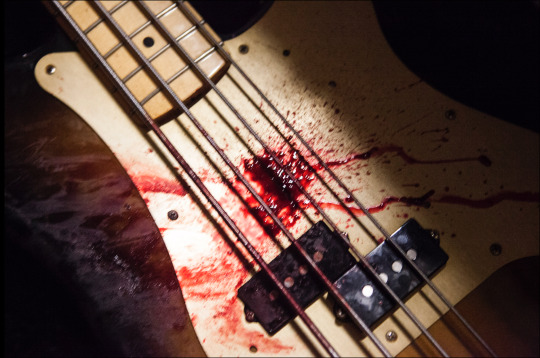
The story of doom begins two generations ago in the UK with a band called Black Sabbath. An important new film, titled The Doom Doc, seeks to connect the dots from those early days to the present, just one city away from Ozzy, Tony, Geezer, and Bill’s Birmingham roots. Directed by Connor Matheson, the Sheffield documentary was released the same year as Black Sabbath played their last.
youtube
DOOM /do͞om/
noun
death, destruction, or some other terrible fate
verb
condemn to certain death or destruction
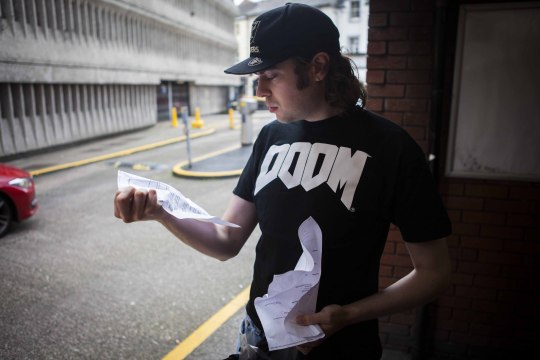
The Doom Doc made its timely appearance in 2017; the year Birmingham legends Black Sabbath decided this was (really) The End. Roughly an hour-and-a-half north, we’re met by the hustle and bustle of Sheffield, England. Traffic is awash in a glowing red hue. Pedestrians going to and fro in crowded movements reminiscent of a group of ants.

Sheffield is home of Def Leppard, Human League, and Pulp for the mainstream. For the underground, it’s home to Kurokuma, Regulus, Ba'al, ARAE, and a steady swell of others who are making sure the UK doom scene stays on the map right where Black Sabbath left it.
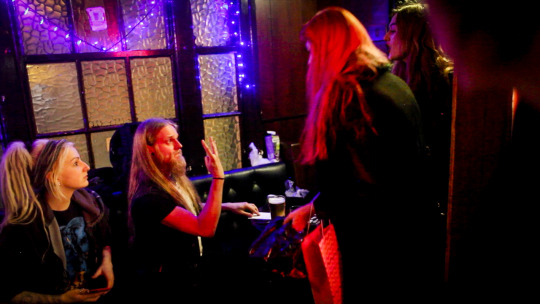
We hear the voice of Craig Bagshaw, who lives in Sheffield and also fronts Holy Spider Promotions. He tells a tale of going to a party and one of his mates answering the door with a screwdriver in hand and a wild look in his eyes. Upon entry, Craig's friend tells him that he's got some MDMA and he's already toasted. There is an argument about quality of said MDMA. Craig's friend then takes his belt off and starts whipping his mate’s asses as if he was their dad! He screams some twisted gibberish about the Holy Order of the Spider.

Most everyone reading this understands how DIY metal is and even more so with doom and sludge. Jack Newnham of Slabdragger argues, "You’ve just got to make your own scene. You've got to make it happen! If you don't, there isn't a scene." Not surprisingly, heavy music for these folks has become a lifestyle. "It goes beyond hobby to a lifestyle," insists Slabdragger’s Sam Thredder.
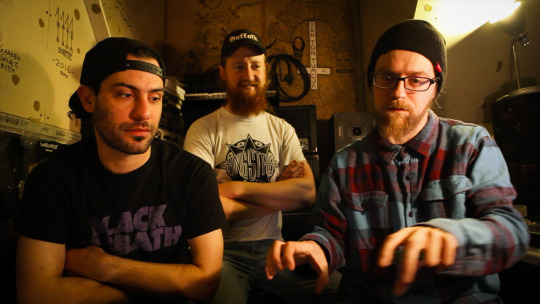
Doom may mean different things to different people, but to George Ionita of Kurokuma and ARAE, "Doom’s like fucking apocalypse! It's like when it rains down on you, like when it's so heavy...When we come out with a heavy riff, we'll take off our plugs and stuff and just fucking mosh. That's what doom is! It's the pleasure inside, when I close my eyes playing the song and I see visuals.” George has an example in mind for us, too. “We've got this song about a fucking volcano. I close my eyes and I think about the volcano. I see the volcano overflowing, exploding. It's boss! It's all I've got to say."
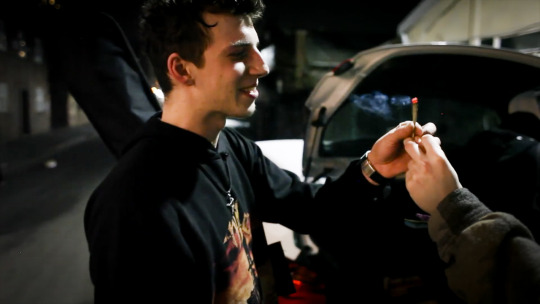
Bandmate Joe E. Allen chimes in: “You don't go to doom-sludge shows to hear nice melodies and to hear someone singing nice songs. You go because you want feel like something heavy hitting you in the chest and that's the kind of shows we put on with Holy Spider. We don't want something that feels like a normal metal gig. We want to do something that feels like you’re on some other plane of existence. It's just mashed together into this experience of really loud, really. Really extreme heavy, affecting music."
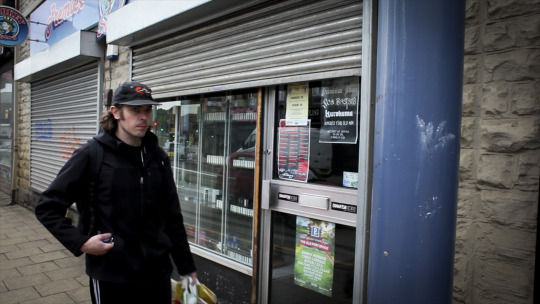
Sheffield-based writer Rachel Genn serves as narrator of The Doom Doc, tracing doom metal all the way back to the almighty Black Sabbath. Sabbath changed everything and influenced everybody. They’re the first band to tune down, she recounts, because Tony Iommi had to in an attempt to play guitar after an unfortunate industrial accident clipped several of his fingertips. The incident is recounted in Tony’s own memoir, Iron Man: My Journey Through Heaven and Hell with Black Sabbath (2011).

"That started the whole thing," affirms drummer Vinny Appice of Black Sabbath, Dio, and Heavy & Hell fame. "Tony plays in the pocket, playing these chords. You wanna hear doomy chords? Just let Tony riff for a little bit. It's amazing! That's why we call him Mr. Riff -- The Riff Doctor!"
"Yeah it's all about Sabbath really, isn't it, to be honest?” turning back to Slabdragger’s Sam. “Like, they just smoke weed all the time -- so did all the bands in the ‘60's -- and they make the music we pretty much make."
youtube
Rachel sums it up nicely for us all: "Doom metal is a subgenre of metal and involves very slow tempos, extremely loud volumes, repetitive, sometimes psychedelic, riffs, and long compositions. Lyrics dealing with evil negativity, spirituality or fantasy. It’s the musical equivalent of wading through black treacle."
I’ve not had an experience with black treacle, but it sounds tantalizing.
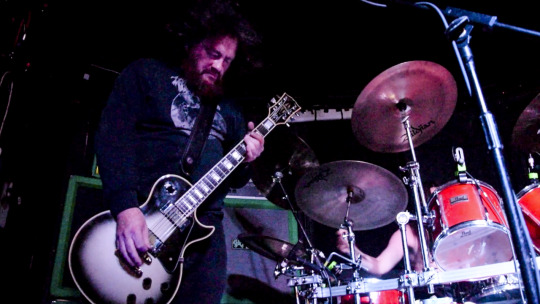
"I think like one of the main things with like the Conan guitar sound is, in general, that the fact that the guitar is tuned to drop F, which is totally, ridiculously low,” Says Chris Fielding of Conan and Skyhammer Studio with a chuckle.
youtube
Breaking down doom even further, the documentary tells us where the subgenres of sludge metal and stoner rock fit into the equation. "Sludge is like a wilder, greased-up version of doom,” we’re told. “It was Melvins from Washington who first begun the sound." The Seattle band, of course, famous for its punked-up doom tendencies. Other bands like as Eyehategod, Sourvein, Thou, and Crowbar would go on to define the genre even more distinctively.
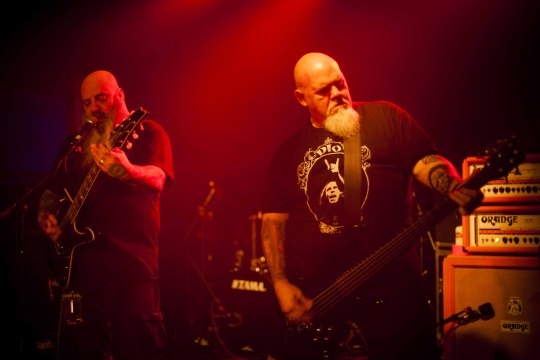
Speaking of which, the great Kirk Windstein now makes an entrance to tells us about the sludgey roots of the venerated NOLA band Crowbar. "We had come from thrash backgrounds and all that kind of shit. We were like, We just want to do something completely different. We're burned out on it. We kinda just did the opposite of what everybody else was doing. Everybody else was tuned to E standard, playing 1000 miles an hour [so we] tuned it down to fucking B and drop A, playing super slow. We felt it made it a lot heavier.”
youtube
It appears that Kirk has been caught up in the Spirit at this moment in the interview, as he then exclaims: “God it's so fucking heavy! There's no way to describe it. I love heavy music!"
Cheers to Kirk Windstein and his earth-shakingly heavy riffs.

In the '90s there was another scene that must be mentioned to understand the evolution of doom metal. Several states down from Washington, another important development in heavy music was taking place in the much sunnier terrain of the southwest. Most famously, bands like Kyuss and Fu Manchu dabbled in fuzzy, tuned-down rock ‘n’ roll, which we simply call stoner rock. Stoner bands began appearing not only in California, Arizona, and Texas, but all around the freaking world.

Rob Graham of the Sheffield-based Wet Nuns and Drenge mentions being a little irked by the term stoner rock. “I think it's sad when any form of expression becomes just about the drugs that the people are into,” he says, while also noting: “It's pretty cool to smoke weed and listen to heavy music.” A better word to focus on? Blues. “To begin with we were sorta just a blues band. Like we were this thrashy kinda garage blues band. Bored, creative people that wanted to really [make] fuckingly stupid loud music.”
As the conversation goes along, we stumble upon a familiar theme: “Somewhere along the way we stumbled across this like kinda thing heavy, so heavy!” Rob says, notably enthused. “That's what we're about we were trying to be as heavy as we could be. It's like trying to run in a swimming pool! It's like being stuck in a tar pit and melting. That's what it conjures to me, anyway."
Anyone up for little skinny dip in a lake of treacle?

While “stoner” may be used in a derogatory sense, there’s no denying that marijuana has been a huge influence for doom metal and stoner rock bands alike, leading to the advent of stoner-doom. If Black Sabbath started doom’s love affair with their ‘71 single “Sweet Leaf,” bands like Electric Wizard and Sleep (with their monumental opus, Dopesmoker) forever married Mary Jane to The Riff. Others, such as Weedeater, Weedpecker, Bongzilla, BelzebonG, Dopelord, Dopethrone, have become important mile markers for the scene.
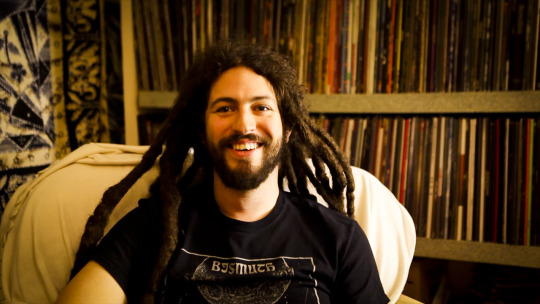
"Yeah the two seem to go hand in hand," says Kez Whelan of Terrorizer Magazine and Nottingham doom-grind act Shrykull. “Even though it's associated, that sweet leaf is the influence it isn't for everybody in the doom scene.”
Not everyone is down with the dope, however. Craig and Joe’s counterpart in Holy Spider Promotions, Terry Larkin, is introduced to us next. A UK doom fan, he is quite; a marijuana fan, not so much. "I was never really into the whole listening to music and smoking weed. It doesn't affect me nicely at all!” He does seem to contend that we can get high on the music composed by a musician under the influence. “They can actually channel it into the music effectively giving the listener that same feeling, too." Music makes you high? That’s a thesis we can get behind.

Kirk Windstein returns, because you know he has stories to tell from all those years hanging with Phil Anselmo, Pepper Keenan, Jimmy Bower, and the rest. "A lot of the guys did smoke weed,” he recalls, “so we were very creative sitting in a circle together with a good buzz, you know, coming up with shit that ended up being great. Down was much more of a collaboration and a jam session type thing. So we jammed from fuckin’ in the afternoon until whenever -- fuckin’ two o’clock in the morning. By then, everybody was tanked or high or whatever might be. We were able to come up with some great music doing it that way!"
youtube
By this point in The Doom Doc, we’re clear on at least one thing: doom, whatever the flavor, is about keeping it real. You’ll never be short of songs about the despair, depravity, and greed in this dog eat dog, eye for an eye world of ours. Doom metal bands are straight shooters. Whether it concerns religion, politics, or human nature, they call it like they see it.
"Bands like us and in our genre and the whole nine yards, we write and speak about reality," Kirk says. "A lot of people are scared of reality. The truth hurts. A lot of people try to sugarcoat it [and] sweep it under the rug. I think it's important. People always ask me, you know, ‘Can we talk about this, can we talk about that?’ I’m like, you can ask me anything you want. I might not answer, [but] chances are I'm gonna.” What he says next really resonated with me, as I’m sure it will with many of our readers: “I think it’s really for people struggling, you know, with depression -- or its alcohol and drugs. It's very important for them to realize they’re not alone and other people have been there."
Ethan McCarthy of Primitive Man chimes in: "We're writing about real life stuff, you know, so it's like a way to release bad feelings about life's shit, if that makes sense." It makes good sense to me.
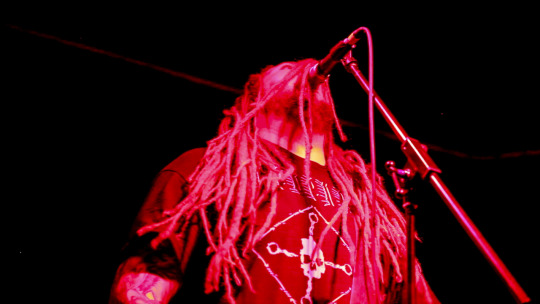
"I don't know what we're into, but I fucking like it!" proclaims the great Bill Ward, adding: “You know, for me, playing in a loud, aggressive band, which is what Black Sabbath was, it’s the most comfortable, sonic, and heartfelt place one could be.”
Doomed & Stoned’s Elizabeth Gore and Hugo Guzman were fortunate enough to contribute to this portion of The Doom Doc, visiting the Black Sabbath drummer at his studio in Los Angeles.
This scene we invest in. We choose to nourish this garden.
"Doing a live gig,” Bill Ward says, “I need to thrash and to play and get everything out of me and reach that place of satisfaction inside. I like to come off the stage wasted...It’s very sexual. It’s like, you know, it’s the same thing we have to do when we get together and have sex!" Oh, Bill. You do have a way of leaving us speechless.
youtube
“Playing live on stage gives me that same feeling," Bill continues. "That's what music is supposed to do! It's supposed to go wherever it's supposed to. It’s pretty simple. I find no faults, no judgement, you know. Leave that to someone who’s more righteous. As far as I'm concerned, metal's fucking metal!"
Returning now to Joe E Allen from Kurokuma: “I remember Conan being extremely atmospheric, extremely heavy, extremely loud -- and that was only amplified by the way we were feeling. It was almost a transcendental experience. I was touched by the finger of doom that night!"
youtube
As a vested fan of the genre, this was pretty much my “Hell, yeah!” moment of the documentary. From start to finish, The Doom Doc is an evident work of passion. For fans of doom, it should be required watching. I’m not sure how newcomers to the genre will take it -- it’s hard to be objective when you listen to it, write about it, play it, and live it. Nonetheless, this 90-minute film is a welcome entry into a fairly small collection of documentaries on the heavy underground. Hopefully viewers will be inspired by it to dig into their own local scenes and do a little riff-mining of their own.

Upcoming Screenings of The Doom Doc
International Film Festival Rotterdam (Holland), January 2018
Desertfest London (UK), May 2018
Bristol (UK), May/June 2018
Brutal Assault (Czech Republic), August 2018
Look for The Doom Doc on DVD by this summer at www.theDoomDoc.com
UPDATE!
The Doom Doc DVD is now available pre-order, with worldwide shipping and streaming options availalbe. Visit: thedoomdoc.bigcartel.com
#D&S Reviews#Doom Doc#Holy Spider Promotions#Connor Matheson#Black Sabbath#Bill Ward#Crowbar#Kirk Winstein#Conan#Jon Davis#Kurokuma#Slabbdragger#Doom#Metal#documentary#Shawn Gibson#Doomed & Stoned
4 notes
·
View notes
Text
March 2018: Album Review Roundup

This is getting out of hand.
As I do my best to stay up on “the culture,” my monthly lists of notable releases seem to be growing longer and longer. While I’m trying to limit these roundups to fewer than ten albums per post, roughly thirty albums came out this month that grabbed my attention in one way or another. There’s so much new stuff I almost don’t know where to start, yet I must.
Here are some of the best/most notable releases from March of 2018.
Previous Roundups: January, February.
Soccer Mommy - Clean
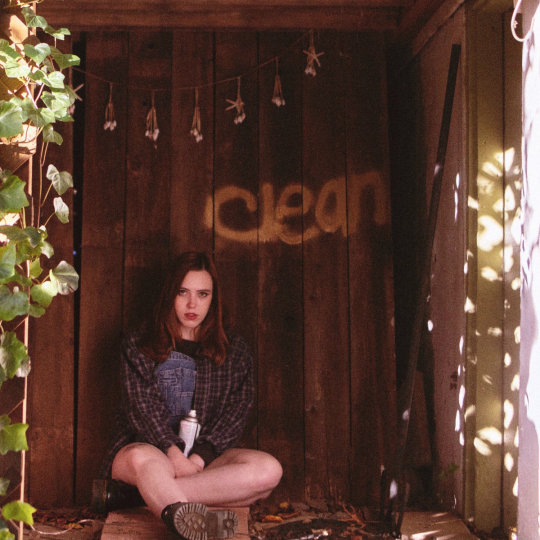
While she made some waves in 2017 with her career-spanning Collection, Soccer Mommy (whose real name is Sophie Allison) has arrived in full-force this year with her debut album Clean. This 2018 release finds Allison moving away from the solo bedroom recording of her previous work and into full-band indie rock territory. With sparkling guitars, a rumbling rhythm section, and of course Sophie’s passionately-delivered vocals, Clean is the raw emotion you’ve been waiting for. Sometimes spiteful and vitriolic (“Your Dog”), other times writhing in insecurity (“Last Girl”), and occasionally wholly-triumphant (“Scorpio Rising”), the tunes off this record have cemented Soccer Mommy as a well-deserved star of the indie circuit, and the voice of a million awkward people fumbling through their own relationships.
Camp Cope - How to Socialize and Make Friends
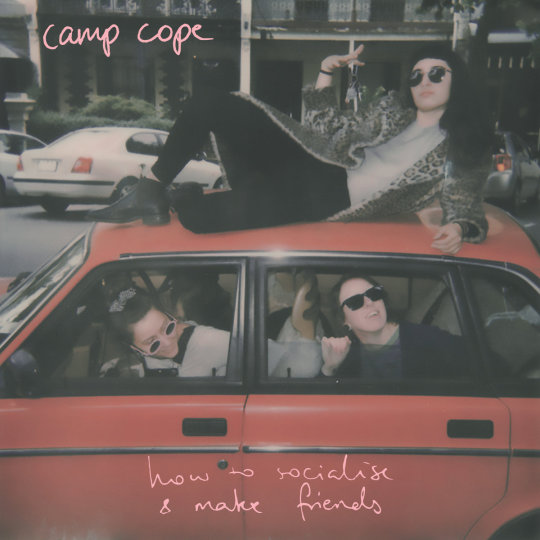
Fists clenched and voices raised, the outspoken Melbourne trio has returned with the follow-up to their much slept-on 2016 full-length. Striking while the iron’s hot, How to Socialize is an album for right now. Fraught with political commentary and much-needed callouts, this is less of an album and more of an open defiance. The catalyst for change and the soundtrack to a long-overdue rebalance, this record is a blunt and open dialogue giving words to a group that’s needed them most. The music itself is beautifully-goosebump-inducing. Exploding with unrestrained vocal takes, cresting guitar strums, bouncy basslines, and rocksteady drum patterns, Camp Cope is the exact type of band that the music industry needs right now.
Sorority Noise - YNAAYT

YNAAYT is a full-album reimagining of You’re Not As _____ As You Think that casts new light on last year’s landmark emo record. Not content to merely swap electric instruments out for acoustic ones, YNAAYT indeed is best described as a “reimagining.” With loving acoustic arrangements, beautiful orchestral flourishes, and a remixed tracklist, Sorority Noise transformed what could have been a one-off gimmick into a gorgeously-composed piece of art. The songs are reworked, shifted, and changed just enough that it’s almost unrecognizable from the LP upon which it’s based, making for a compelling back-to-back listen. Released alongside a hiatus announcement, this would be a graceful note for the band to go out on (as much as I hate to think about it). This album is concrete proof that there’s beauty, serenity, and eventual recovery in grief.
Jack White - Boarding House Reach

I’d describe myself as a “begrudging Jack White Stan.” For better or worse, White has played the single biggest role in the formation of my musical taste. The foundation for everything I like, and an artist that has loomed large in my library for a majority of my life. In spite of (or perhaps because of) his importance to me, his work post-White Stripes has been hit or miss for me. While I eventually came around to Blunderbuss, Lazaretto came across as the musical equivalent of jerking off while staring into a mirror. Perhaps feeling the need for a pivot himself, White described his 2018 album as "a bizarre one" that sounded like "good gardening music or roofing music or… back-alley stabbing music." The craziest thing is he isn’t wrong.
It seems that in between unearthing old music, sounding like an old man, and being hopelessly conceptual, Mr. White actually had time to cook up a decent record. I’ll admit that (of the two sides of Jack) I’m a bigger fan of his more thrashy garage rock half, so the fact that this album takes that distorted riffage and cranks it up to 11 makes me a very happy stan. There’s still a decent amount of jangly country Nashville sound, but “Rock” (with a capital R) is this record’s primary language. There are moments of unbridled weirdness, which are to be expected (ironically), but at its heart, Boarding House Reach is the best album that I can expect from Jack White in 2018.
Earthless - Black Heaven
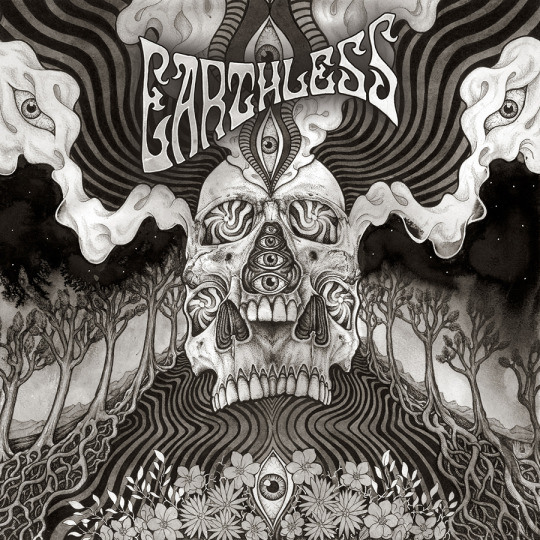
Speculate what you will about where music is “headed,” but there will always be room in my heart for a great rock album. On Black Heaven, the typically-instrumental Earthless gives us a collection of sprawling and hard-charging metal tracks. Their fifth album as a band, Black Heaven is a psychedelic heavy metal odyssey. 39 minutes of forward momentum and chest-inflating riffs that fire on all cylinders up until the final notes. An album for driving through the desert as fast as your car will allow while the sun is at its highest point.
Yo La Tengo - There's A Riot Going On
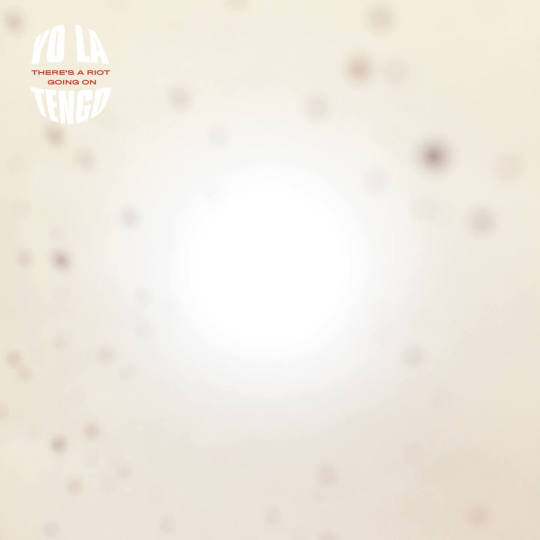
While Yo La Tengo may not be the biggest band in the world, their influence can be felt all over the indie rock sphere. Over the course of their thirty-plus-year career, they’ve hardly ever made a misstep, and There's A Riot Going On only adds another layer of greatness to their legacy. Half ambient, half traditional Velvet-Underground-Esque slow jams that they’re known for, Riot is best described as a pleasant album. A record you can devote yourself to entirely, or let run in the background, both to equally-enjoyable ends. A calm, relaxing, and chilled out hour of new material that will provide the soundscape for years of creativity to come.
Haley Hendrickx - I Need To Start a Garden
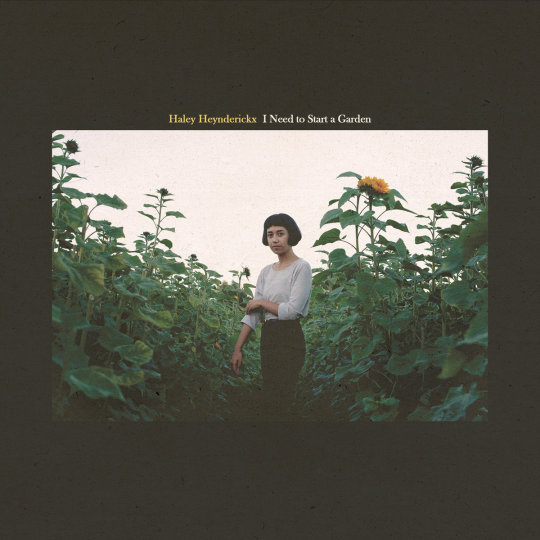
On I Need To Start a Garden we witness as Haley Hendrickx attempts to balance the cultivation of her soul with the well-being of those around her. With deeply-cutting lyricism, haunting, fragile vocals, and wonderfully-arranged instrumentals, Garden is a carefully-crafted record. At its best moments, the album’s minimalism serves Hendrickx’s style well as the songs crest from held-back whispers into full-blown explosions of sound and emotion.
Easily my biggest surprise of the month, and an early frontrunner for album of the year, Haley Hendrickx is a person to watch, with a record to love. For my full review of I Need To Start a Garden, keep your eyes on Hooligan Magazine in the coming weeks.
Quick Hits

Two Dozen albums from the past month. All summarized in one sentence.
Donovan Wolfington - Waves: Released posthumously following the band’s untimely demise, Waves is a textbook shredder of an album. Proof that it’s better to go out on top than not at all.
Disco Inc. - The Boredom Keeps me up at Night: Five forthright and punchy punk rock tracks stretched across 15 electrifying minutes. Equal to or greater than the energy received from a cup of coffee.
Titus Andronicus - A Productive Cough: Eschewing all previous conceptual frameworks and punk-leanings, A Productive Cough finds frontman Patrick Stickles embracing, emulating, and achieving a pitch-perfect version of the singer-songwriter music that he was brought up on.
The Breeders - All Nerve: As if the last two decades never happened, the Deal sisters are back alongside their primo ‘93 line-up. Together they deliver a collection of 11 beautifully-grungy tracks that prove the 90’s aren’t dead yet.
Superorganism - Superorganism: Eight pseudonym-clad bandmembers deep, this synth-laden indie pop group formed, and turned this record around within the space of a calendar year. Bright, vivacious, and charming as all get out, Superorganism have already made a name for themselves with this bubbly debut.
Lucy Dacus - Historian: Slow-moving and heavy-minded singer-songwriter moodiness for a rainy day or a broken heart.
Gulfer - Dog Bless: Tappin’ guitars, screamin’ vox, bombastic drummin’, Gulfer deliver emo revival goodness on their gleaming sophomore album.
Lil Yachty - Lil Boat 2: Coasting off the recognition of his breakthrough mixtape, Lil Yachty offers up 17 sleepy and unfocused tracks that only occasionally meander into genuine entertainment. Overall, it seems like Yachty has lost the plot.
Logic - Bobby Tarintino II: Rick and Morty skits aside, the latest Logic mixtape isn’t as cringy as the internet would have you believe. Packed with dense lyricism and hyper-technical bars, this release cuts out all the fat and gets straight to the rapping.
Young Father - Cocoa Sugar: Electronic, unpredictable, and utterly new, Cocoa Sugar is future music.
Vile Creature - Cast of Static and Smoke: Optimistic queer black metal from the fantastical Canadian duo.
Remo Drive - Pop Music EP: A trio of fresh tracks from the breakthrough pop-punk band. Aptly-titled, this 8-minute release is catchy, bright, and colorful. Essentially the musical equivalent to fructose-laden soda.
Of Montreal - White Is Relic/Irrealis Mood: A groovy, dancy, funkwave inferno of radiant two-sided indie tracks.
Nap Eyes - I’m Bad Now: Indie rock with Lou-Reed-esque vocals that display resolve, even while in the calamitous eye of the hurricane.
Mooseblood- I Don’t Think I Can Do This Anymore: The UK pop-punks offer up a vague and uniform 36-minutes of relationship strife on this blue follow-up to Blush.
Mount Eerie - Now Only: Another long-form meditation on the death of a loved one. Heartwrenching and spell-binding.
The Decemberists - I’ll Be Your Girl: The Portland, Oregon five-piece return with a mixed bag of brightly-colored election reaction tracks.
Preoccupations - New Material: sharp and bombastic post-punk from a future that almost didn’t exist.
Citizen - Live at Studio 4: Live in-studio versions of three of the best cuts off 2017’s As You Please.
Hot Mulligan - Pilot: Chicken soup for the modern emo’s soul.
Blessthefall - Hard Feelings: Neon-lit metalcore with a hyper-clean and poppy approach.
The Sword - Used Future: Equal parts jammy, psychedelic, stoner, and riffy. This is a chill and laid-back album that’s perfect for the outdoorsy metalhead.
Trace Mountains - A Partner to Lean On: Chilled-out Alex G-esque Americana with an electronic slant.
The Voidz - Virtue: An hour of political indie rock from the outspoken and leather-clad Julian Casablancas.
Frankie Cosmos - Vessel: Verbose (professional) bedroom folk from the Princess of Bandcamp.
Czarface x MF DOOM - Czarface Meets Metal Face: Bars. Just. Bars.
Casey Musgraves - Golden Hour: Lovely, lovesick, loveless country music made for sun-drenched valleys and porch-lit beers.
The Weeknd - My Dear Melancholy,: Six smutty, spacy breakup songs from the void of heartbreak.
Plus singles from The Voidz, Gucci Mane, The Wonder Years, Snail Mail, Jack White, DJ Khaled, Royce Da 5’9”, God Is An Astronaut, Parkway Drive, ZHU, Half Waif, Anderson .Paak, Beach House, Dj Khaled, Vince Staples, The Decemberists, A$AP Rocky, Grouper, Dr. Dog, Parquet Courts, Courtney Barnett, Weird Al, Panic! At The Disco, Underoath, Flatbush Zombies, Miguel, Jens Lekman, MØ, Our Last Night, Iceage, Cardi B, Migos, Manchester Orchestra, Alvvays, Lil Pump, CHVRCHES, Rae Sremmurd, Unknown Mortal Orchestra, Hop Along, and N.E.R.D.
0 notes
Text
A very warm evening once more, one would almost think the island of Ireland had moved to just of the coast of Portugal to see what the craic was. Inside the Limelight it was wonderfully cool, though it didn’t stay that way for very long.
The crowds began to trickle in for the support act, The Fallen State, as the fate of many support bands are wont to be. Those cramming themselves right up the front were those who knew of The Fallen State. Others nonchalantly lingered at the back cradling their ice cold beers. But that soon changed as the band exploded in a frenzy of rock that made a few mouths drop open. Thundering start in with hard rocking “Hope in revival”, “Lost Cause” and then a beautiful lazy southern rock style ballad “Sons of Avarice”, that would just perfectly fit with pulling down your cowboy hat and supping on a JD. The front was beginning to fill up nicely as people were taking more and more notice of these five lads who were giving it all and it was paying off.
(c) Darren McVeigh MetalPlanetMusic.com
(c) Darren McVeigh MetalPlanetMusic.com
On into the militaristically high energy of “Send up the World”, “Nova”, and “Burn it to the Ground” as they tore up the stage with an anthemic hard rock style that had an infectious body rocking headbanging exuberance. They finished their set with “You want it” to a lot of praise from the floor. It was no small thing that The Fallen State produced a tight musclebound set that had so many perfectly balanced ingredients, with Ben’s soulful and wailing vocals, the emotive harmonies and hard rocking riffs of Jon and Dan, all stirred in by the heavy groove of Rich’s drums and Greg’s bass. Rich has to be picked out here and given man of the match. No matter how the group performed the eye was inevitably drawn every so often to Rich’s nonchalant but complete mastery of the drums.
Then on to Tremonti, as the place had now practically packed to the rafters. It was as if they were famous for something or other! If you didn’t know of Mark Tremonti, of Alter Bridge, and his Tremonti Project you knew the full story of his and his band mates’ power to perform by the end.
Coming straight in for the jugular Mark and his band stormed the stage with “Cauterize”, “Another Heart”, “You waste your time” and “All I was”. This band meant business and their professional delivery of absolutely incredible heavy hard rock slam-dunked a dominance that nothing could dislodge on the night. Mark had the crowd in the palm of his hands and had a great rapport with both adoring fans and new converts. He perfectly stoked up the crowd into a frenzy of bobbing heads, waving arms and clapping with each new song. The band not only owned the stage they had it subservient and begging for more. Tremonti put on a hell of a show that nobody will forget.
(c) Darren McVeigh MetalPlanetMusic.com
(c) Darren McVeigh MetalPlanetMusic.com
(c) Darren McVeigh MetalPlanetMusic.com
(c) Darren McVeigh MetalPlanetMusic.com
(c) Darren McVeigh MetalPlanetMusic.com
(c) Darren McVeigh MetalPlanetMusic.com
(c) Darren McVeigh MetalPlanetMusic.com
(c) Darren McVeigh MetalPlanetMusic.com
(c) Darren McVeigh MetalPlanetMusic.com
(c) Darren McVeigh MetalPlanetMusic.com
On the auditory assault continued with “Traipse”, “My last Mistake”, “Take you with me” and “Things I’ve seen”. The sound was an incredible mixture that flowed and blended together into a perfect balance of skater rock, stoner metal, punk and hard rock. Nearly every song had a familiarity about it, even if it was the first time you ever heard it.
There was absolutely no let up as Mark strode on like a rock god with “As the silence”, “So you’re afraid”, the heavy metal chugging “Flying Monkeys”, and epic “Bringer of War”.
Tremonti’s songs are musical odysseys of pure epic proportions as groove laden heavy riffs and gravely singing give way to harsh aggressive vocals and thick and fast thrashy energetic punk metal before changing up to a wall of noise rolling over you gently pushed on by a smooth lyrical voice. Its very difficult to pin these guys down to any particular style.
Then came “Throw them to the Lions” with an incredibly catchy riff rumbling throughout the song that feels like Tremonti took “Keep yourself alive” and added some serious heavy metal into the mix, the title track “A Dying Machine”, and their “Dust”. The sweat was pouring off
The “not an encore” encore saw them rip to shreds what was left of the stage with “Radical Change” and “Wish you Well”.
This was an incredible show from start to finish. The two bands were on point and on top form giving full entertaining performances earning every penny and pound given to buy tickets. Nobody should have left the Limelight short changed. If you get a chance to see either The Fallen State or Tremonti, take that chance with both hands. You will not regret it.
Review by Ivor Whitten, Happy Metal Geek
Photography by Darren McVeigh, Metal Planet Music
GIG REVIEW: @TremontiProject dominate the @LimelightNI in Belfast with @thefallenstate @MarkTremonti @WeAreAC_Promo @JeffRobinsonPR A very warm evening once more, one would almost think the island of Ireland had moved to just of the coast of Portugal to see what the craic was.
0 notes